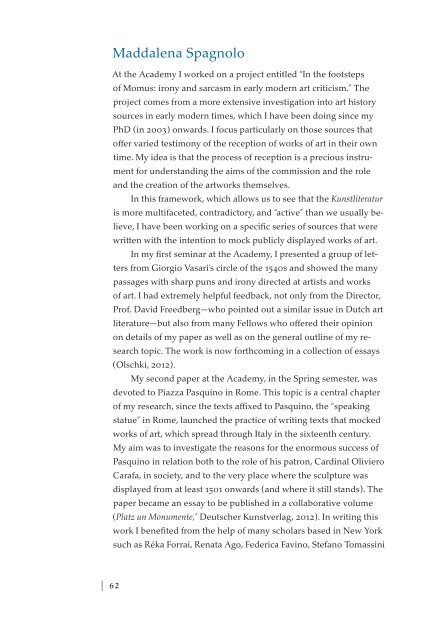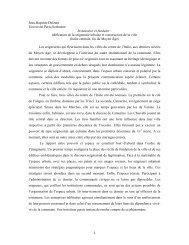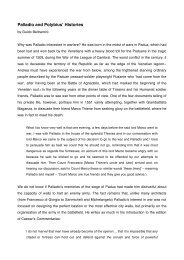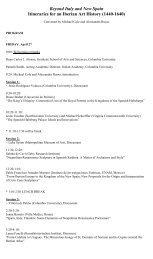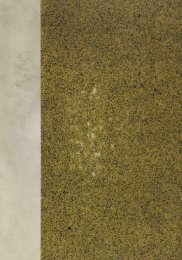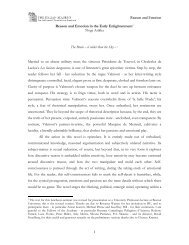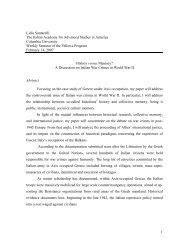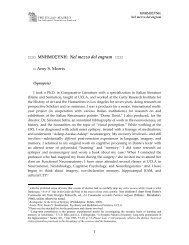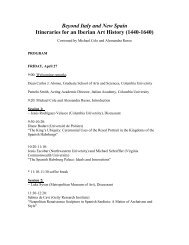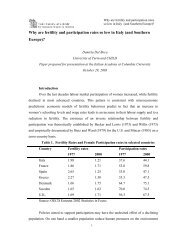2011-2012 - The Italian Academy - Columbia University
2011-2012 - The Italian Academy - Columbia University
2011-2012 - The Italian Academy - Columbia University
Create successful ePaper yourself
Turn your PDF publications into a flip-book with our unique Google optimized e-Paper software.
Maddalena Spagnolo<br />
At the <strong>Academy</strong> I worked on a project entitled “In the footsteps<br />
of Momus: irony and sarcasm in early modern art criticism.” <strong>The</strong><br />
project comes from a more extensive investigation into art history<br />
sources in early modern times, which I have been doing since my<br />
PhD (in 2003) onwards. I focus particularly on those sources that<br />
offer varied testimony of the reception of works of art in their own<br />
time. My idea is that the process of reception is a precious instrument<br />
for understanding the aims of the commission and the role<br />
and the creation of the artworks themselves.<br />
In this framework, which allows us to see that the Kunstliteratur<br />
is more multifaceted, contradictory, and “active” than we usually believe,<br />
I have been working on a specific series of sources that were<br />
written with the intention to mock publicly displayed works of art.<br />
In my first seminar at the <strong>Academy</strong>, I presented a group of letters<br />
from Giorgio Vasari’s circle of the 1540s and showed the many<br />
passages with sharp puns and irony directed at artists and works<br />
of art. I had extremely helpful feedback, not only from the Director,<br />
Prof. David Freedberg—who pointed out a similar issue in Dutch art<br />
literature—but also from many Fellows who offered their opinion<br />
on details of my paper as well as on the general outline of my research<br />
topic. <strong>The</strong> work is now forthcoming in a collection of essays<br />
(Olschki, <strong>2012</strong>).<br />
My second paper at the <strong>Academy</strong>, in the Spring semester, was<br />
devoted to Piazza Pasquino in Rome. This topic is a central chapter<br />
of my research, since the texts affixed to Pasquino, the “speaking<br />
statue” in Rome, launched the practice of writing texts that mocked<br />
works of art, which spread through Italy in the sixteenth century.<br />
My aim was to investigate the reasons for the enormous success of<br />
Pasquino in relation both to the role of his patron, Cardinal Oliviero<br />
Carafa, in society, and to the very place where the sculpture was<br />
displayed from at least 1501 onwards (and where it still stands). <strong>The</strong><br />
paper became an essay to be published in a collaborative volume<br />
(Platz un Monumente,” Deutscher Kunstverlag, <strong>2012</strong>). In writing this<br />
work I benefited from the help of many scholars based in New York<br />
such as Réka Forrai, Renata Ago, Federica Favino, Stefano Tomassini<br />
| 62


